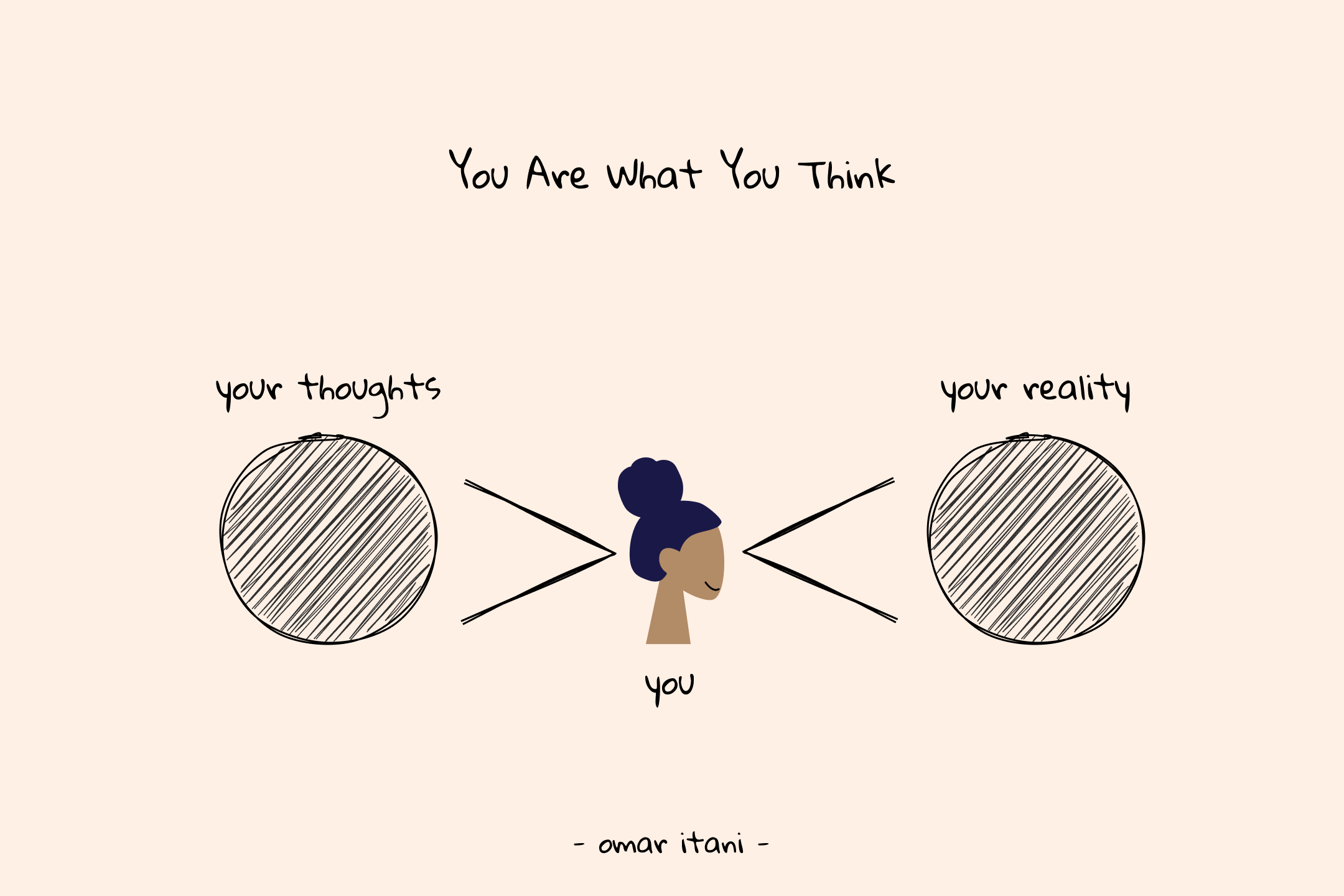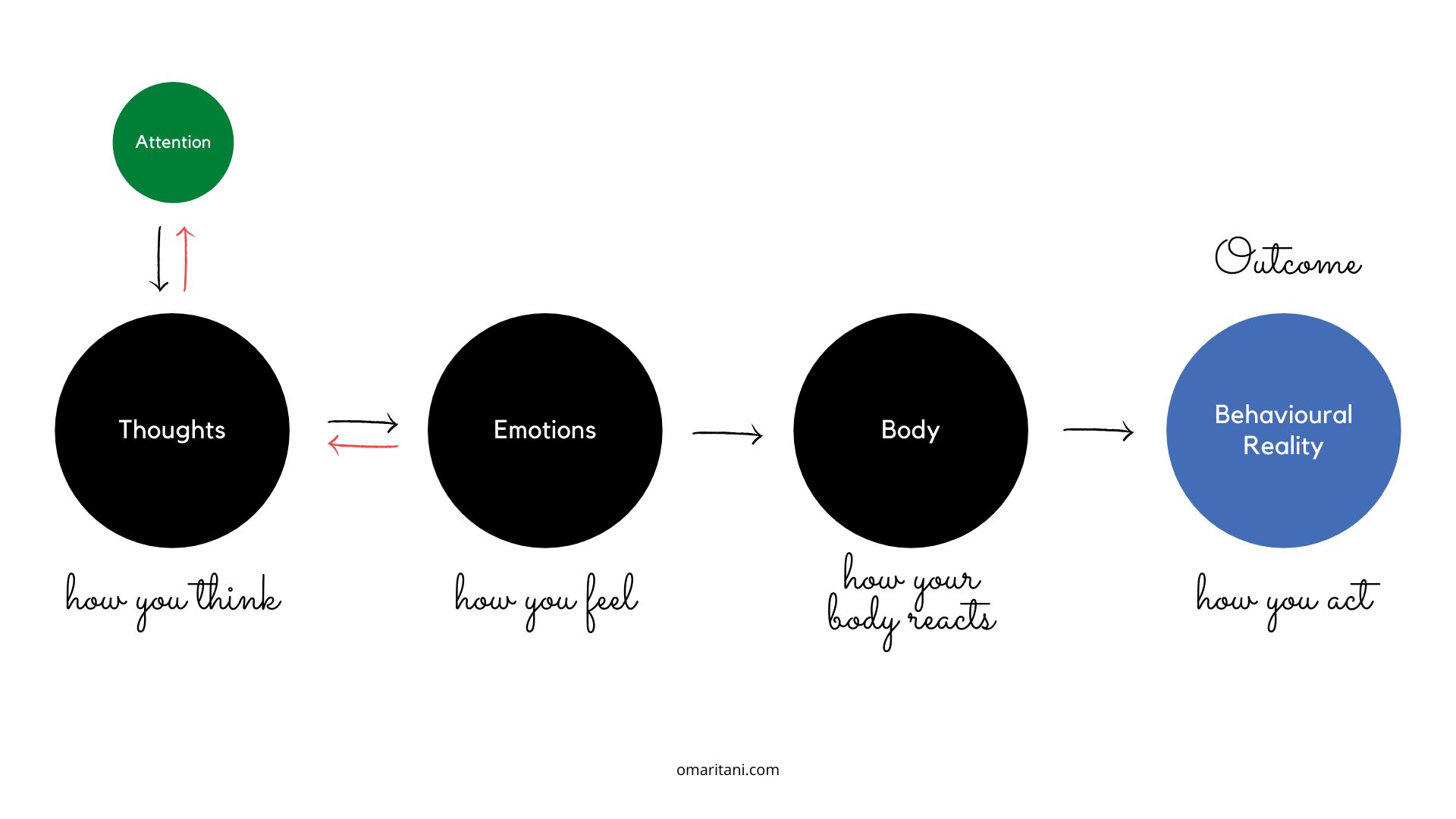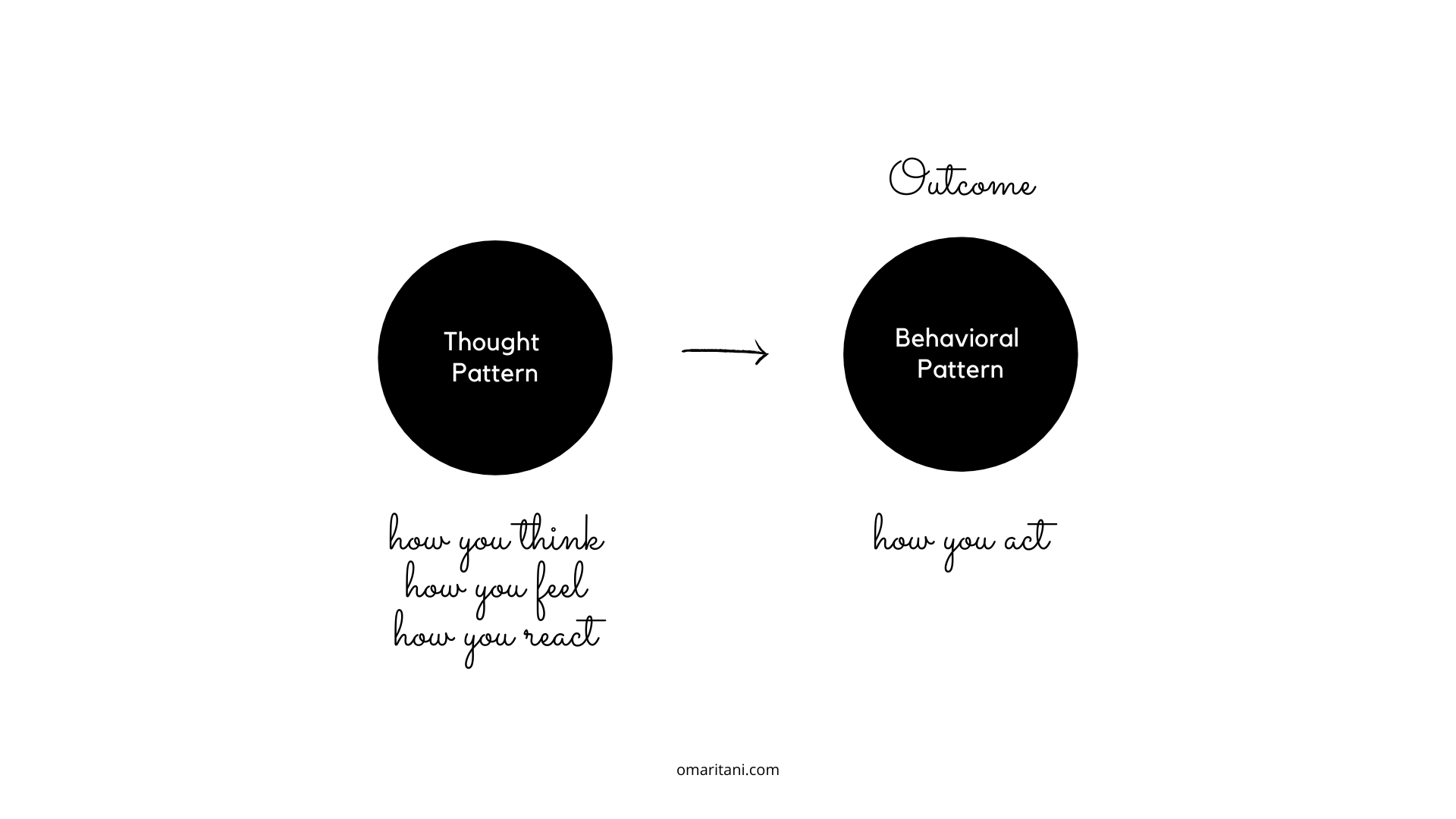You Are What You Think: How Your Thoughts Create Your Reality
There’s a ‘secret’ that all great historical and present thinkers, philosophers, and high achievers have agreed to be a universal truth.
This secret revolves around this simple idea: You are what you think.
English philosopher James Allen wrote: “As a man thinks, so he is; as he continues to think, so he remains.” Stoic and Roman emperor Marcus Aurelius wrote: “A man’s life is what his thoughts make of it.” Poet and philosopher Ralph Waldo Emerson wrote: “A man is what he thinks about all day long.” Author Earl Nightingale said: “We become what we think about,” and Mark Twain wrote: “Life consists mainly of the storm of thoughts that is forever flowing through one's head.”
All these great minds discovered the secret to living a happy, purposeful and productive life, and it’s this:
We live in a world of thought.
Our thoughts create our experiences, and thus, we experience what we think.
It is the quality of our thoughts, then, that create the quality of our life.
When we’re unhappy where we are in life, we seek to create change.
So we go about transforming our environment believing that doing so will create the necessary change we hope to see. We buy things for a materialistic boost of happiness. We travel to escape our problems. We seek substances to numb the mind and help us forget.
But of course, we fall back to where we had started: unhappy with where we are today.
And so the cycle repeats itself. We buy, we travel, we forget—always focusing on the external factors we need to alter in order to create better circumstances.
This happens because we falsely assume that change begins from the outside. In truth, the environment does play a role in changing your circumstances, but it doesn’t address the root of the cause (your thinking) that is the driver behind why you feel the way you do.
Here’s what you need to realize:
If you want to change the outside, you must first change the inside. You must change the attention of your thoughts because what you think directly influences how you feel, and how you feel directly influences how your body reacts, and how your body reacts directly influences how you behave, and how you behave comes to define who you are and what you experience in life.
“If you get the inside right, the outside will fall into place.”—Eckhart Tolle
It all begins with your thoughts—our life experiences spring from the thoughts we actively engage in: You are what you think.
And to comprehend the essence of this statement, you first need to understand the link between your thoughts, emotions, and behavior.
The Link Between Thoughts, Emotions, and Behaviour
Thoughts, in and of themselves, have no power—it’s only when we actively invest our attention into them that they begin to seem real. And when we engage with specific thoughts, we begin to feel the emotions that were triggered by these thoughts—we enter a new emotional state which then influences how we act.
For example, if you regularly engage with the thought that you’re a failure and feed more attention to it, you’ll start to feel down, worthless, discouraged and perhaps even depressed.
How does your body react to this? You sulk down, slump your shoulders, and project no confidence.
But if you engage with more empowering thoughts, they would boost your confidence and thus trigger a more positive emotional state which will then be reflected in how your body reacts: standing up straight, upbeat and energized.
The Link Between Thoughts, Emotions, and Behaviour. Everything begins with the thoughts you pay attention to.
Thoughts trigger emotions, and the vibrational frequency of these emotions then feed back into the original thought. And as we continue to give mental attention to the initial thought, it reaffirms the emotion, which then energizes the thought. And so we experience a continuous cycle of think, feel, think, feel, think, feel.
This results in the emotional state you come to experience: stressed, depressed, discouraged, happy, energized, confident, etc…
How you think and how you feel directly impact how your body reacts, and all three influence how you behave and what actions you take.
This is how your thoughts create your reality. It’s in the way you behave and act that you define who you are and what you experience in life—and the way you behave and act is simply a construction of how you think, feel, and do.
So, in short:
Emotions are the reactions to the thoughts you give attention to.
How you feel (and your body language) is a reflection of what you’re thinking about.
Since emotions and the body’s reactions are triggered by the thoughts you give attention to, therefore, you’re living in a world of thought: Your thoughts create your experiences, and thus, you experience what you think.
This means that all the problems we experience are nothing more than a thinking problem.
The “real problem” is not the problem.
The “real problem” is how we think about our problem.
We are not our circumstances.
We are what we think of our circumstances.
You failing in your business is not the problem, the problem is in you perceiving it to be a problem—it’s in how you’re thinking about it. You disliking your job and blaming your career choices for it is not the problem, the way you think about it is the problem.
Our problems are nothing more than our emotional and body reactions to our thoughts about the problem. So if we can observe and change our attention or perception, we can change our emotional reaction, which then changes our body reaction, which ultimately changes how we act and experience our reality.
And that’s exactly why true change begins from the inside, not the outside.
“We spend all our time and money and energy trying to change our experience on the outside, not realizing that the whole thing is being projected from the inside out.”—Michael Neill, Author
So if you think you’re a failure, you’ll feel like a failure, and then you’ll act like a failure. As long as you give attention to the thought that you’re a failure, you’ll continue to experience this reality, which then reinforces your belief that you must be a failure. This is called a though pattern and it has the power to destroy your life.
Your Thought Patterns Reinforce Your Beliefs
A thought pattern is “a habit of thinking in a particular way.“
In his book, Rewire Your Brain, psychologist John Arden writes:
“The more you do something, the more likely it is that you will do it again in the future. Repetition rewires the brain and breeds habits. The more the neurons fire together, the more likely it is that they will fire together in the future.”
Every thought we experience creates a chemical reaction in the brain which then triggers an emotion. As we engage with this thought, it creates a new circuit that sends a signal to the body and we react a certain way. The more we repeat this pattern, the more it seeps into our mind and becomes a habit. This is why neuroscientists say “cells that fire together wire together.”
As you keep thinking the same thoughts, producing the same emotions and performing the same actions, you continue to live by the same experiences.
As we repeatedly engage in the same thought patterns of think, feel, do, these patterns encode as a blueprint in our subconscious mind. And what does our subconscious mind do? It runs 95% of our life on automation.
As Dr. Bruce Lipton explains:
“Neuroscientists have shown that most of our decisions, actions, emotions and behavior depend on the 95% of brain activity that is beyond our conscious awareness, which means that 95% of our life comes from the programming in our subconscious mind.”
This is why it’s so hard to make change happen!
It’s because we’ve repeated the thought patterns so many times that they’ve now become rooted in who we are: Our thought patterns reinforced our beliefs, and our beliefs came to define who we are and the reality we experience.
Psychologist Amy Morin explains that “once you draw a conclusion about yourself, you’re likely to do two things; look for evidence that reinforces your belief and discount anything that runs contrary to your belief.”
If you develop the belief that you’re a failure, you will view every mistake you make as proof to affirm that you are, indeed, a failure. And when you do succeed at something, you’ll credit it to luck. And this is how your thoughts create your reality. As you continue to think you’re a failure, you continue to feel and act in a way that reaffirms your belief. What happens next? You dwell and fall into a trap of self-pity.
Create New Patterns to Create a New Reality
So what does this all mean to you?
This:
As you keep thinking the same thoughts, producing the same emotions and performing the same actions, you continue to live by the same experiences.
As we repeatedly engage in the same thought patterns of think, feel, do, these patterns encode as a blueprint in our subconscious mind.
Your subconscious mind automates your life, which means (if you’re not aware of your thought patterns), you will continue to live by the same behavioral patterns—and thus, your current experiences. As per Carl Jung’s words: “Until you make the unconscious conscious, it will direct your life and you will call it fate.”
As we repeat thought patterns, they become subconscious behavioural patterns that drive our life.
So how do you change your reality?
You create new patterns that create a new reality.
You recondition yourself.
This isn’t something that you change overnight, this is a lifetime commitment to mindful reprogramming and growth. It’s what neuroscientists refer to as neuroplasticity—the idea that you can rewire your brain by creating new behavioural patterns where new cells fire together and wire together.
And in order for you to do this, you need to understand that you are not your thoughts, you are the thoughts you give power and attention to—you are the thinker.
Your thoughts are nothing more than an endless stream of ideas running through your mind.
They are powerless until you decide to cling onto one on them, which then trickle into a chain. This very act makes you the thinker of your thoughts.
In other words, imagine your mind to be a farm and your thoughts to be the seeds. You can plant either good seeds (roses) or bad seeds (poison ivy). Whichever seed you choose to focus on and plant, it will then grow and multiply. And the same happens in your mind—whichever thought you choose to focus on and plant, it will then grow and multiply.
You are the planter of the seeds.
You are the thinker of your thoughts.
Do you want your mind to flourish into a garden of roses or a farm of poison?
“You are not your thoughts, you are the thoughts you give power and attention to—you are the thinker.”
So how do you create new behavioural patterns?
You create new thought patterns.
And how do you create new thought patterns?
Here’s how:
Increase your awareness by observing your emotions and body reactions.
Be more conscious of what thoughts you give your attention to.
It’s what psychologists call metacognition—the idea of thinking about our thinking.
The next time you feel a strong emotion, bring your awareness to it by pausing and asking yourself:
“What’s going on in my mind right now? Why am I feeling this way?”
Why am I angry? Why am I upset? Why am I feeling so low?
This can help us figure out why we're feeling what we're feeling and drive us back to the root cause of these feelings: the thoughts we first gave our attention to.
As author and master trainer of Neurolinguistic Programming Michael Neill explains:
“It’s not the thoughts that pass through your head that impact your life; it’s the one you take possession of and think about all day long. Once we agree to give our attention to a thought, it becomes more and more real to us over time and has more and more power over out life.”
It triggers an emotion, which then triggers a body reaction and drives us to act in a certain way.
This thought pattern creates a mental circuit in our brain, and as we repeat it, it becomes a subconscious behavioural pattern that runs on automation.
This is how your thoughts shape your reality.
This is why you are what you think.
And this is why all the great minds and thinkers agree that:
We live in a world of thought.
Our thoughts create our experiences, and thus, we experience what we think.
The quality of our thoughts creates the quality of our life.
Save this article.
Reread it often.
Remind yourself of the power of the thoughts you give your attention to. They become your beliefs and they go on to define your life and how you experience it.
You are what you think.


